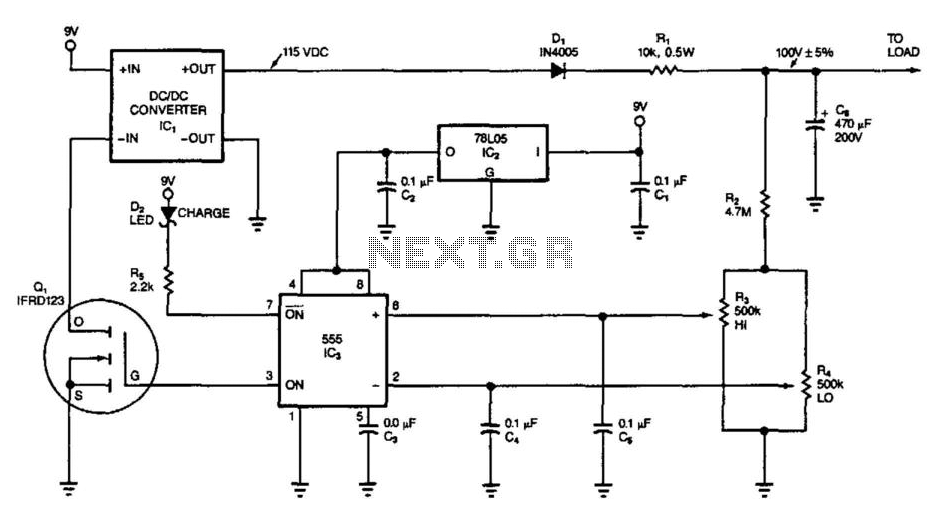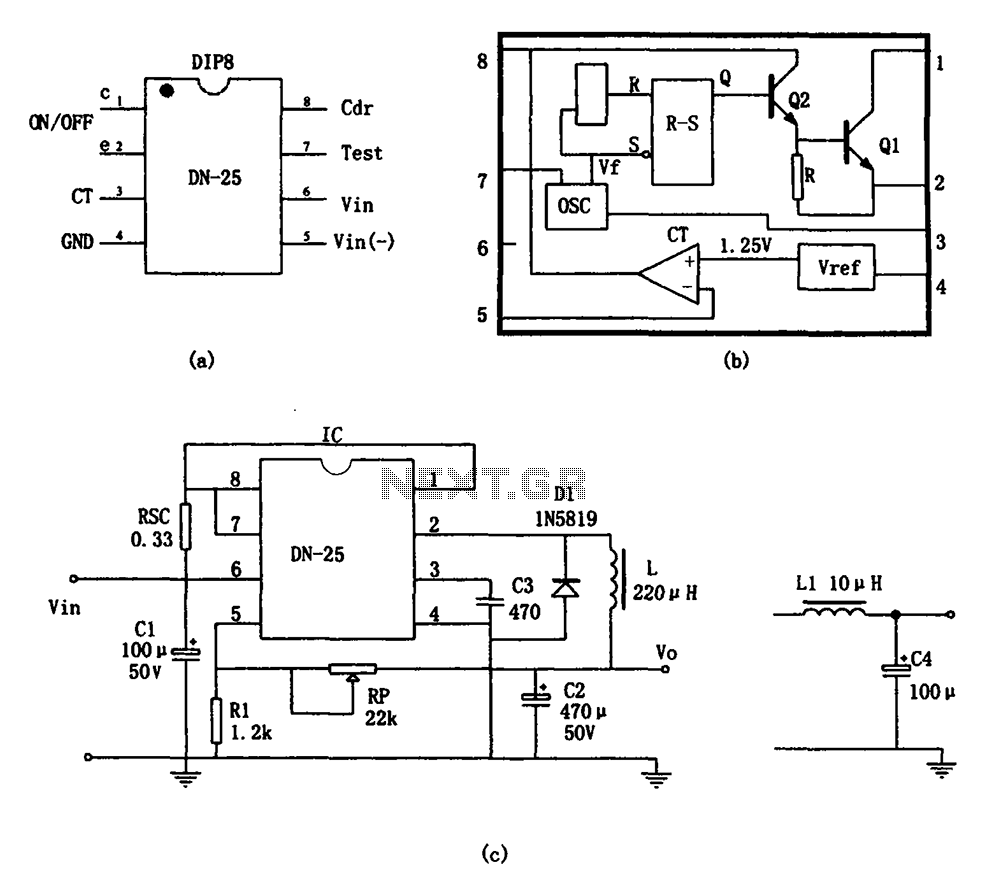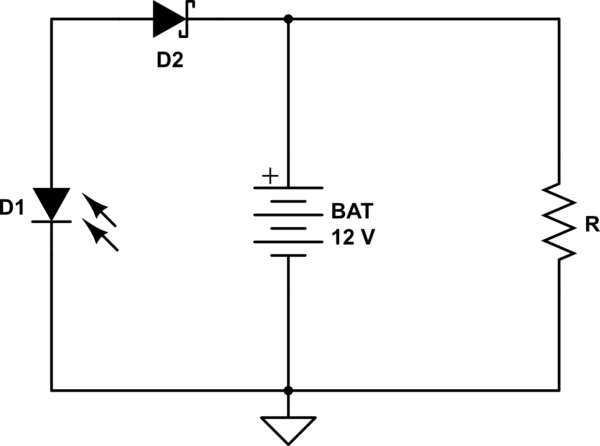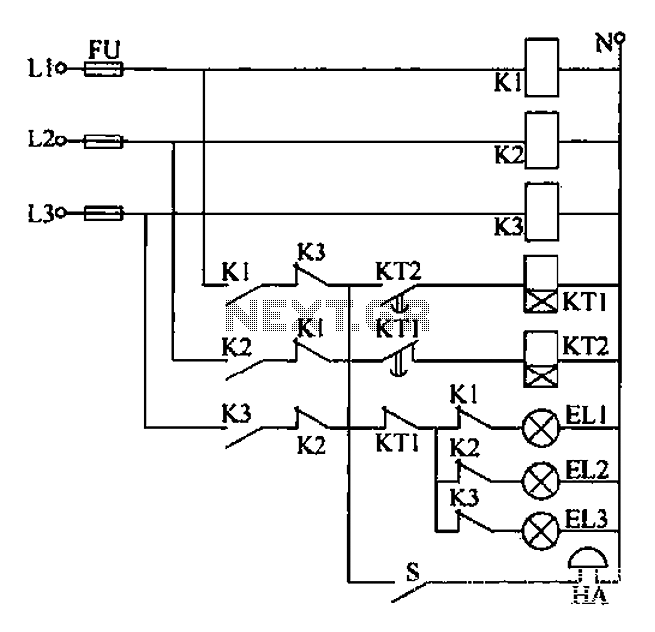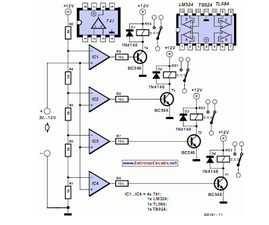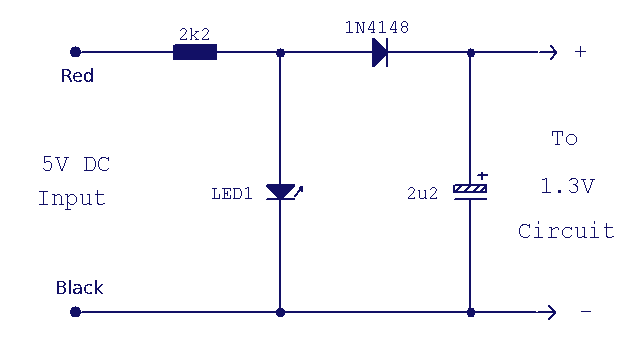
Power MOSFET Bridge Rectifier
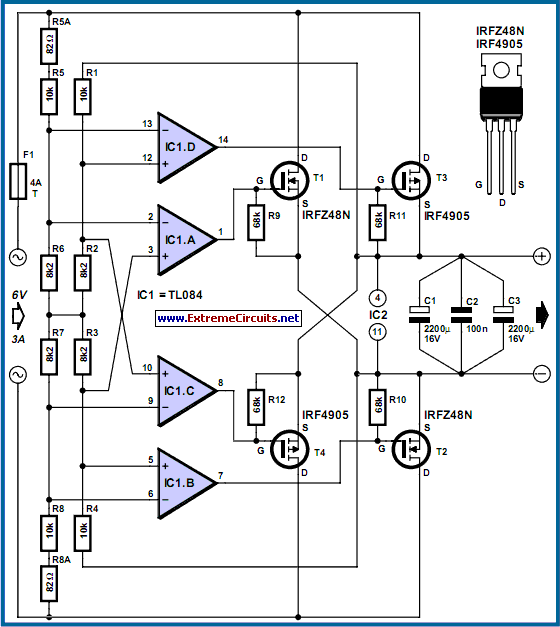
The losses in a bridge rectifier can become significant when rectifying low voltages. The voltage drop across the bridge is approximately 1.5 V, which constitutes about 25% loss with an input voltage of 6V. This loss can be reduced by around 50% by using Schottky diodes, but achieving near-zero losses is possible with a synchronous rectifier. This involves using an active switching system instead of a passive bridge rectifier. The principle is straightforward: whenever the instantaneous value of the input AC voltage exceeds the rectified output voltage, a MOSFET is activated to allow current to flow from input to output. For a full-wave rectifier, four FETs are needed, similar to a bridge rectifier configuration. Resistors R1 and R4 form a voltage divider for the rectified voltage, while R5 and R8 do the same for the AC input voltage. When the input voltage slightly surpasses the rectified voltage, IC1d activates MOSFET T3. In conjunction, the MOSFET diagonally opposite T3 must also be activated, which is managed by IC1b. During the next half-wave, the AC voltage polarity reverses, prompting IC1c and IC1a to activate T4 and T1, respectively. The voltage dividers are not entirely symmetrical; the input voltage is slightly reduced to introduce a delay in FET activation, which is preferable to premature activation that could increase losses. It is advisable to use 1% resistors for the dividers, or even 0.1% resistors if available. The control circuit around the TL084 is powered by the rectified voltage, eliminating the need for an auxiliary supply. This raises the question of how the system operates initially without voltage. Fortunately, due to their internal structures, all FETs have internal diodes that facilitate circuit startup (albeit with some losses). The selection of FETs is not critical; any available type can be utilized, although the internal resistance will affect losses. Common values for internal resistance range from 20 to 50 mΩ. Such FETs can handle currents around 50 A, with average currents of 5 A potentially resulting in peak currents of 50 A. The IRFZ48N (55 V @ 64 A, 16 mΩ) specified by the author may still be available, but alternatives such as the IRF4905 (55 V @ 74 A, 20 mΩ) can be used. For input voltages above 6 V, it is recommended to increase the value of the 8.2 kΩ resistors, for instance, to 15 kΩ for 9V or 22 kΩ for 12 V.
The synchronous rectifier circuit described employs a four-MOSFET configuration, which enhances efficiency by minimizing voltage drops during the rectification process. The control logic, implemented with a TL084 operational amplifier, is responsible for driving the MOSFETs based on the input AC voltage levels. The voltage dividers (R1, R4, R5, and R8) are designed to ensure that the MOSFETs are activated at the correct moments, preventing premature switching that could lead to increased losses. The use of high-precision resistors (1% or better) is crucial to maintain the stability and performance of the voltage sensing and control circuitry.
The internal diodes of the MOSFETs play a critical role during the startup phase of the circuit. They allow for initial conduction, enabling the rectifier to begin functioning even when no voltage is present. This characteristic is particularly beneficial for applications where rapid startup is essential. The selection of MOSFETs should consider their on-resistance, as lower resistance values will result in reduced conduction losses, thus improving overall efficiency.
In applications where the input voltage exceeds 6 V, adjusting the resistor values in the voltage dividers ensures that the control circuit operates effectively across a range of input voltages. This flexibility allows the synchronous rectifier to be used in various applications, from low-voltage power supplies to higher voltage systems, while maintaining optimal efficiency and performance.The losses in a bridge rectifier can easily become significant when low voltages are being rectified. The voltage drop across the bridge is a good 1. 5 V, which is a hefty 25% with an input voltage of 6V. The loss can be reduced by around 50% by using Schottky diodes, but it would naturally be even nicer to reduce it to practically zero.
That`s pos sible with a synchronous rectifier. What that means is using an active switching system instead of a passive` bridge rectifier. The principle is simple: whenever the instantaneous value of the input AC voltage is greater than the rectified output voltage, a MOSFET is switched on to allow current to flow from the input to the output. As we want to have a full-wave rectifier, we need four FETs instead of four diodes, just as in a bridge rectifier.
R1 R4 form a voltage divider for the rectified voltage, and R5 R8 do the same for the AC input voltage. As soon as the input voltage is a bit higher than the rectified voltage, IC1d switches on MOSFET T3. Just as in a normal bridge rectifier, the MOSFET diagonally opposite T3 must also be switched on at the same time.
That`s taken care of by IC1b. The polarity of the AC voltage is reversed during the next half-wave, so IC1c and IC1a switch on T4 and T1, respectively. As you can see, the voltage dividers are not fully symmetrical. The input voltage is reduced slightly to cause a slight delay in switching on the FETs. That is better than switching them on too soon, which would increase the losses. Be sure to use 1% resistors for the dividers, or (if you can get them) even 0. 1% resistors. The control circuit around the TL084 is powered from the rectified voltage, so an auxiliary supply is not necessary.
Naturally, that raises the question of how that can work. At the beginning, there won`t be any voltage, so the rectifier won`t work and there never will be any voltage. Fortunately, we have a bit of luck here. Due to their internal structures, all FETs have internal diodes, which are shown in dashed outline here for clarity.
They allow the circuit to start up (with losses). There`s not much that has to be said about the choice of FETs it`s not critical. You can use whatever you can put your hands on, but bear in mind that the loss depends on the internal resistance. Nowadays, a value of 20 to 50 mW is quite common. Such FETs can handle currents on the order of 50 A. That sounds like a lot, but an average current of 5 A can easily result in peak currents of 50 A in the FETs.
The IRFZ48N (55 V @ 64 A, 16 mW) specified by the author is no longer made, but you might still be able to buy it, or you can use a different type. For instance, the IRF4905 can handle 55 V @ 74 A and has an internal resistance of 20 mR. At voltages above 6 V, it is recommended to increase the value of the 8. 2-kR resistors, for example to 15 kR for 9V or 22 kR for 12 V. 🔗 External reference
The synchronous rectifier circuit described employs a four-MOSFET configuration, which enhances efficiency by minimizing voltage drops during the rectification process. The control logic, implemented with a TL084 operational amplifier, is responsible for driving the MOSFETs based on the input AC voltage levels. The voltage dividers (R1, R4, R5, and R8) are designed to ensure that the MOSFETs are activated at the correct moments, preventing premature switching that could lead to increased losses. The use of high-precision resistors (1% or better) is crucial to maintain the stability and performance of the voltage sensing and control circuitry.
The internal diodes of the MOSFETs play a critical role during the startup phase of the circuit. They allow for initial conduction, enabling the rectifier to begin functioning even when no voltage is present. This characteristic is particularly beneficial for applications where rapid startup is essential. The selection of MOSFETs should consider their on-resistance, as lower resistance values will result in reduced conduction losses, thus improving overall efficiency.
In applications where the input voltage exceeds 6 V, adjusting the resistor values in the voltage dividers ensures that the control circuit operates effectively across a range of input voltages. This flexibility allows the synchronous rectifier to be used in various applications, from low-voltage power supplies to higher voltage systems, while maintaining optimal efficiency and performance.The losses in a bridge rectifier can easily become significant when low voltages are being rectified. The voltage drop across the bridge is a good 1. 5 V, which is a hefty 25% with an input voltage of 6V. The loss can be reduced by around 50% by using Schottky diodes, but it would naturally be even nicer to reduce it to practically zero.
That`s pos sible with a synchronous rectifier. What that means is using an active switching system instead of a passive` bridge rectifier. The principle is simple: whenever the instantaneous value of the input AC voltage is greater than the rectified output voltage, a MOSFET is switched on to allow current to flow from the input to the output. As we want to have a full-wave rectifier, we need four FETs instead of four diodes, just as in a bridge rectifier.
R1 R4 form a voltage divider for the rectified voltage, and R5 R8 do the same for the AC input voltage. As soon as the input voltage is a bit higher than the rectified voltage, IC1d switches on MOSFET T3. Just as in a normal bridge rectifier, the MOSFET diagonally opposite T3 must also be switched on at the same time.
That`s taken care of by IC1b. The polarity of the AC voltage is reversed during the next half-wave, so IC1c and IC1a switch on T4 and T1, respectively. As you can see, the voltage dividers are not fully symmetrical. The input voltage is reduced slightly to cause a slight delay in switching on the FETs. That is better than switching them on too soon, which would increase the losses. Be sure to use 1% resistors for the dividers, or (if you can get them) even 0. 1% resistors. The control circuit around the TL084 is powered from the rectified voltage, so an auxiliary supply is not necessary.
Naturally, that raises the question of how that can work. At the beginning, there won`t be any voltage, so the rectifier won`t work and there never will be any voltage. Fortunately, we have a bit of luck here. Due to their internal structures, all FETs have internal diodes, which are shown in dashed outline here for clarity.
They allow the circuit to start up (with losses). There`s not much that has to be said about the choice of FETs it`s not critical. You can use whatever you can put your hands on, but bear in mind that the loss depends on the internal resistance. Nowadays, a value of 20 to 50 mW is quite common. Such FETs can handle currents on the order of 50 A. That sounds like a lot, but an average current of 5 A can easily result in peak currents of 50 A in the FETs.
The IRFZ48N (55 V @ 64 A, 16 mW) specified by the author is no longer made, but you might still be able to buy it, or you can use a different type. For instance, the IRF4905 can handle 55 V @ 74 A and has an internal resistance of 20 mR. At voltages above 6 V, it is recommended to increase the value of the 8. 2-kR resistors, for example to 15 kR for 9V or 22 kR for 12 V. 🔗 External reference
Warning: include(partials/cookie-banner.php): Failed to open stream: Permission denied in /var/www/html/nextgr/view-circuit.php on line 713
Warning: include(): Failed opening 'partials/cookie-banner.php' for inclusion (include_path='.:/usr/share/php') in /var/www/html/nextgr/view-circuit.php on line 713
